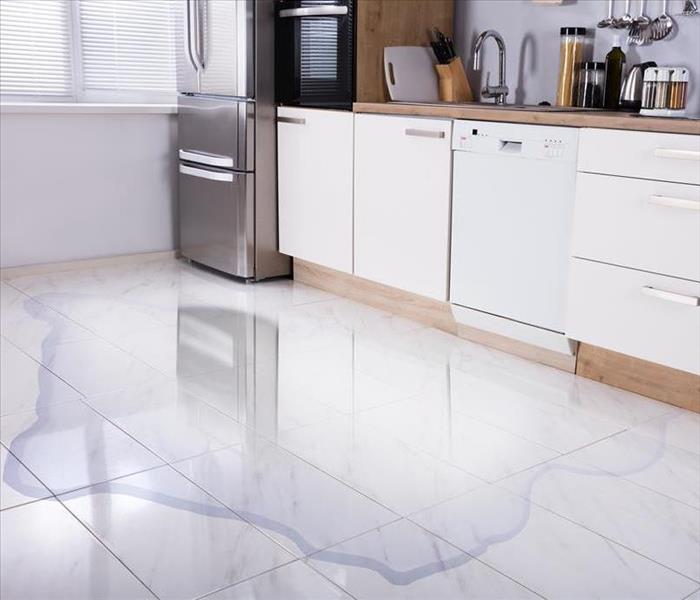How To Identify Contaminated Water and Clean It Up
6/13/2022 (Permalink)
When a home in Pueblo, CO, experiences water damage, it’s vital to take care of the issue as soon as possible. Prior to jumping into cleanup, it’s also essential to know whether it is clean or contaminated water. The latter requires additional safety precautions and is known to spread more quickly.
Is It Black Water?
The IICRC has determined three types of water categories.
Clean:
Considered sanitary, this originates from a source that poses no substantial risk. This type may come from a water supply line, sink or bathtub overflow, or rainwater. It is typically easy to clean and won’t cause long-lasting damage if mitigated quickly.
Grey:
This category of water may have some contamination but is still considered relatively safe to deal with. Sources that create this type of water damage include urine-only toilet overflow, malfunctioning appliances or a leaking aquarium. During cleaning, an anti-microbial spray will be needed to ensure affected items are disinfected properly.
Black:
This highly contaminated water has the potential to have toxins, pathogens, bacteria, chemicals and microorganisms that require added layers of safety when handling. Since it often contains sewage, underground water or waste line backflow, it is best to leave the cleanup to a water damage mitigation and restoration company.
Prevent the Spread
Even if the problem starts as a Category 1, that doesn’t mean it will stay that way. Any water left standing presents a prime situation for mold to start to grow. Since porous materials wick up moisture, even a small amount of water may be slowly causing hidden issues.
That also means that belongings may slowly be sitting in water, possibly causing irreversible damage. After determining the source of the water, cleanup should begin as soon as possible. The following steps should be taken to minimize additional damage:
- Find the source of the water problem and contain it. This may require turning off the main water valve if it is a broken pipe.
- If the situation is being caused by nature, homeowners will have to wait for the water to subside. In the meantime, belongings that haven’t been affected yet should be moved to higher levels.
- Once the source is resolved, wet belongings that can be relocated should be moved to a safe, secure place to dry out thoroughly.
- The next step is to begin removing the water. The faster that happens, the better the chances of minimizing the damage.
- Once water is removed, the affected area needs to be thoroughly dried. Fans and dehumidifiers should be used to speed up the process.
- After several days of drying, depending on the extent of the damage, cleaning, sanitizing and deodorizing can begin.
- The final step is restoration. That may require replacing the carpet, drywall, ceiling panels and other structural components of the home.
While any unwanted water in a home is unwelcome, contaminated water poses additional issues. Knowing the types of water classifications and their sources makes it easier to know when a professional should be called for help. No matter the source, speedy cleanup and swift action are needed to keep it from spreading.





 24/7 Emergency Service
24/7 Emergency Service
